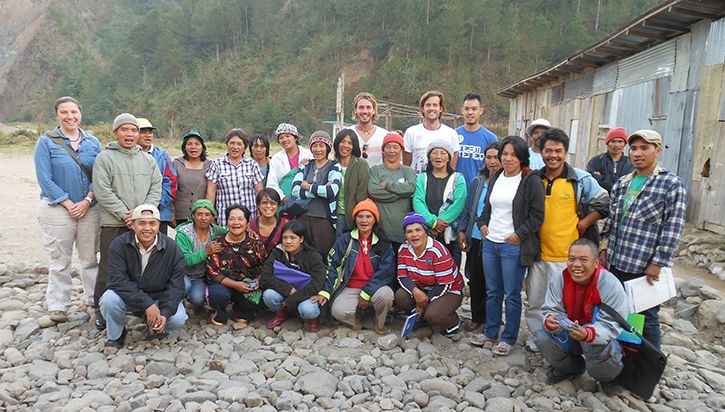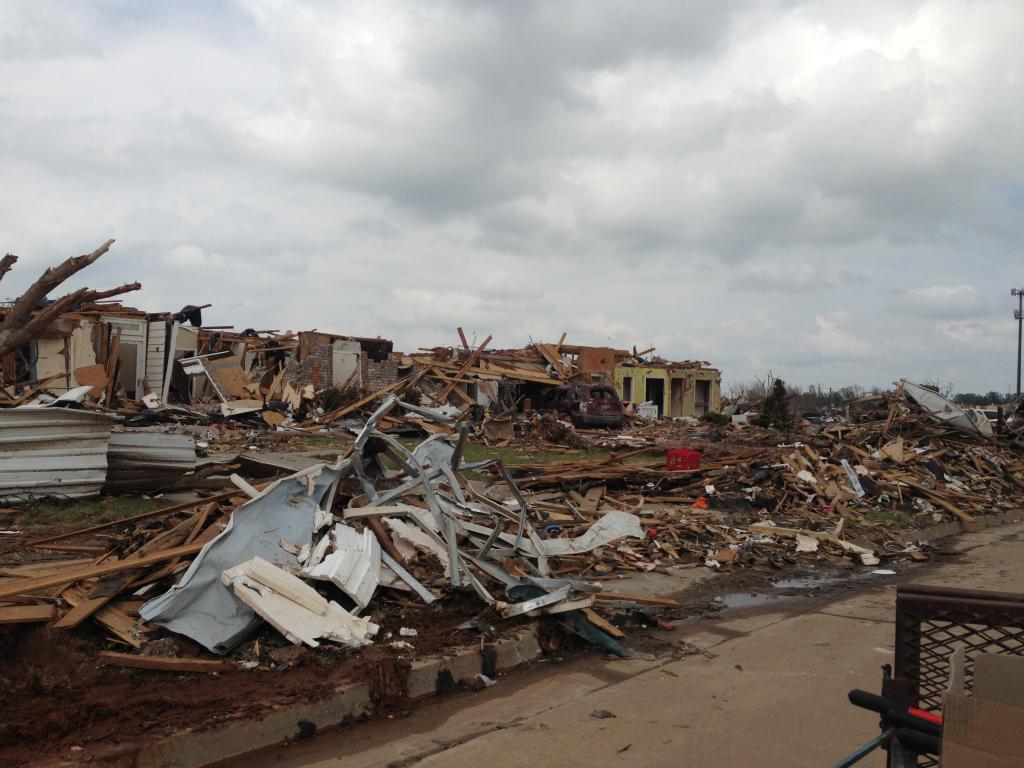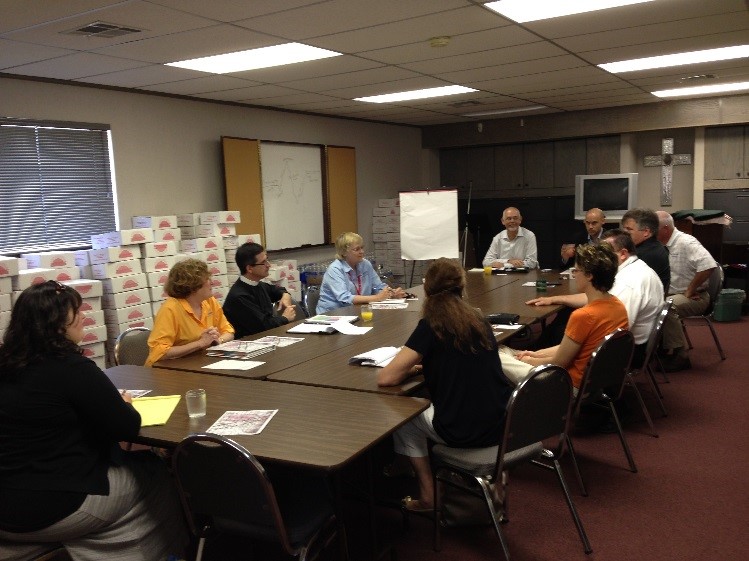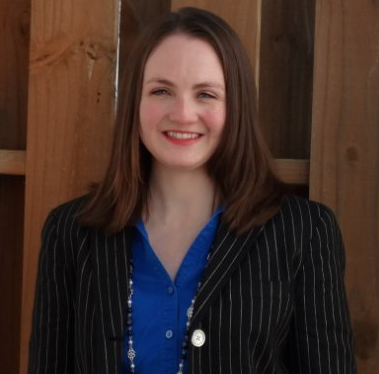The Winds of Change

On May 6, 2015, strong storms and tornados swept through Oklahoma, and the Santa Maria Red Cross Partner Shelter in Oklahoma City sprang into action. Almost immediately, those who had lost everything but their lives, were standing at the door in the pouring rain; cold, wet and in shock. That first night, 68 people found shelter in the caring Santa Maria community. The guests came from all walks of life. However, after escaping near death and now finding comfort in the uniform cots and warm blankets provided by the shelter, they remind us all that despite our differences, we share the same simple desire to be safe and secure. There were shared tears and words of comfort, as the compassionate volunteers of Santa Maria caringly tended to their guests, trying to anticipate every need of these neighbors and friends.

The Episcopal Diocese of Oklahoma is no stranger to dangerous, even deadly, storms. Two years earlier, in May 2013, a series of deadly tornados swept through the state leaving a wide path of disaster, destruction and devastation. Due to the severity of these storms, President Obama declared a major disaster area in the state and ordered federal aid to support state and local recovery efforts. As support poured in from throughout The Episcopal Church, across the country and around the world, the Diocese provided financial assistance to victims directly affected by the storms.
As part of those early recovery efforts, representatives from Episcopal Relief & Development arrived in the Diocese to assist with surveying disaster areas, discussing relief efforts currently underway and addressing plans to develop long-term assistance. After visiting with clergy and lay leaders of congregations, city and county officials, Federal Emergency Management Agency (FEMA) and victims directly impacted by the tornados, the Diocesan staff and Episcopal Relief & Development began crafting a plan for effective and sustainable long-term disaster preparedness and recovery. Out of these discussions, a long-term strategy for the Diocese was developed.

A crucial piece of this strategic plan was the addition of a diocesan staff position responsible for overseeing the operations and coordination of the disaster preparedness and recovery efforts throughout the Diocese. This position was partially supported by a generous grant from Episcopal Relief & Development. Subsequently, Anne Kueteman was hired to serve as the Diocesan Disaster Recovery Coordinator. In her time with the Diocese, Anne has helped numerous congregations and institutions create effective and sustainable disaster preparedness strategies, coordinate on the ground recovery and rebuilding plans and assist in efforts to become Red Cross Resource Centers or Partner Shelters. Currently in the Diocese, 20 congregations are working to serve the Red Cross, two congregations are Red Cross Partner Shelters, one congregation is a Red Cross Resource Center, and other congregations are receiving Red Cross training and organizing Community Emergency Response Teams (CERT).
Another vital element of this strategic plan was to ensure that the Diocese was living into its call to serve those who were underrepresented, marginalized or who may otherwise fall through the cracks of the system. The Diocese strongly believes it is a crucial element of our Baptismal Covenant and Christian responsibility to serve others, especially in times of great need. The Rt. Rev. Dr. Edward J. Konieczny, Bishop of the Episcopal Diocese of Oklahoma, states:
Our Baptismal Covenant asks the questions, ‘Will you seek and serve Christ in all persons, loving your neighbor as yourself?’ and ‘Will you strive for justice and peace among all people, and respect the dignity of every human being?’ Both of which, we answer with, ‘I will, with God’s help.’ The very act of supporting, caring for and respecting the dignity of our neighbors is inherent in our Christian faith. Enacting that belief becomes all the more important when our neighbors have experienced great tragedy or loss. This is especially true when they may not otherwise receive sufficient assistance and support.
This need is prevalent in the south side of Oklahoma City; the very community where Santa Maria Virgen Episcopal Church lives, serves and ministers.
Over the course of nearly a year, in efforts led by the Vicar, Father Natividad Menjivar, leaders of Santa Maria worked with Diocesan Disaster Recovery Coordinator, Anne Kueteman; and Community Recovery and Resiliency Lead Specialist for the Red Cross, Mario Medrano; to establish Santa Maria as a bilingual Partner Shelter for the Red Cross. Additionally, a campaign began in this community to emphasize the necessity of disaster preparedness, the importance of staying the course in a disaster and directions on where to find emergency shelter. As time passed, one storm season after another, the Diocese continued their efforts to create effective and sustainable disaster preparedness and recovery infrastructures in congregations and institutions.
These efforts are more evident now than ever before. As recovery and rebuilding initiatives continue from the May 6th storms, the amazing volunteers at the Santa Maria shelter continue to care for those still in residence. After several days of being allowed to decompress in a safe and secure environment, many are beginning to heal and determine ways to start their lives over. This wonderful community has provided a sanctuary of safety and stability for those who needed it most in a time of fear and uncertainty.
The Diocese continues working with congregations and institutions in disaster preparedness and planning, recovery and rebuilding, and establishing further Red Cross Resource Centers and Partner Shelters. For, the Episcopal Diocese of Oklahoma is no stranger to dangerous, even deadly, storms. Thereby, we live in the knowledge that preparation, planning and providing support can make a life or death difference in a disaster.
————————-

Nicole Baxley is the Communications Director for the Episcopal Diocese of Oklahoma.
Image: Top, Storm damage. Middle 1, Planning meeting. Middle 2, Some of the volunteers at Santa Maria. Middle 3, The Santa Maria shelter. Bottom, More Santa Maria shelter volunteers.
Healing the world starts with your story!
During the 75th Anniversary Celebration, we are sharing 75 stories over 75 weeks – illustrating how lives are transformed through the shared abundance of our partners and friends like you! We invite you to join us in inspiring our vibrant community by sharing your own story!



